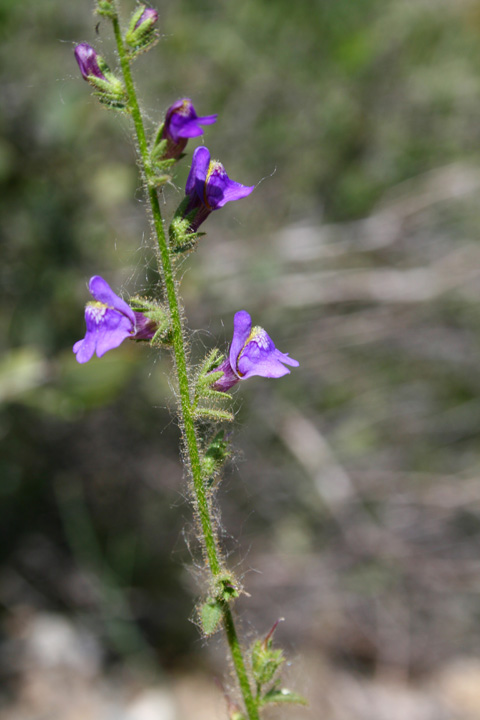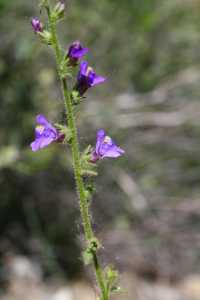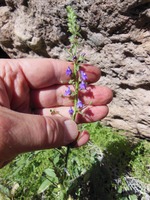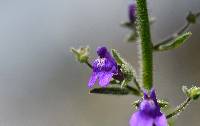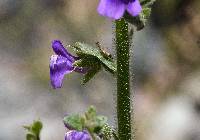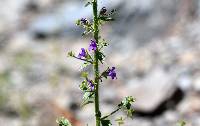Duration: Annual
Nativity: Native
Lifeform: Forb/Herb
General: Annual or biennial forb with an erect, simple, or sparingly branched plant with ascending branches, scrambling through adjacent plants with nearly horizonal, lateral branches to a 120 cm, glandular-pubescent throughout.
Leaves: Alternate, ovate to subcordate-ovate, 2-20 mm wide, 5-40 mm long, reduced to ovate bracts in inflorescence, petioles glandular-pubescent, 1-10 mm long.
Flowers: Inflorescence a 5-30 cm long lax simple raceme or profusely paniculately branched; pedicels 2-20 mm long, ascending, spreading, slender to capillary; calyx oblique, 3-5 mm long, lobes ovate to lanceolate, dorsal one longest, only slightly enlarged in fruit; corolla violet-blue, 10-12 mm long, with lavender tube and yellow, more or less reticulate palate, tube 4.5-6 mm long, gibbous at base, upper lip 4-5 mm long, erect, lobes about 1.5 mm, lower lip 5-6 mm long, erect, yellow hairs in throat, stamens in pairs; styles equal stamens.
Fruits: Ovoid-cylindrical capsule 6-8 mm long, 3.5-4.5 mm wide, dehiscent by 2 definite subapical pores.
Ecology: Found on grassy slopes, along arroyos and in canyons below 4,000 ft (1219 m); flowers February-September.
Notes: Flowers are variable in size and can also be told apart by the broadly ovate leaves.
Ethnobotany: Unknown
Etymology: Sairocarpus is of uncertain origin, while nuttallianus is named for the English botanist Thomas Nuttall (1786-1859).
Synonyms: Antirrhinum nuttallianum, Antirrhinum nuttallianum subsp. nuttallianum
Editor: SBuckley, 2010


